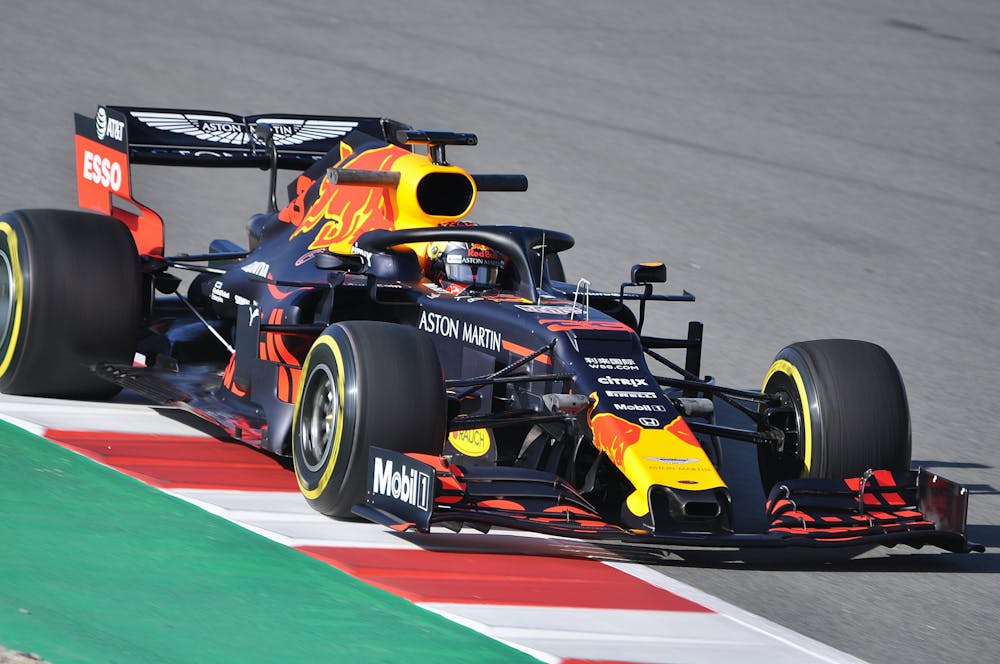
Hey everyone, welcome back from winter break!
We are kicking off this year on a surprisingly positive note: the new 2024 season calendar. After years of complaints about the illogical order in which the races were organized, Formula 1 (F1) is organizing its calendar by geographic location.
In 2022, for example, the competition moved from Emilia Romagna in Italy to the inaugural Miami Grand Prix and then back to Spain for the Catalunya race (which may be on its last edition this year!).
Additionally, certain races were also scheduled at odd times; most notably, last year’s Qatari Grand Prix took place under extreme weather conditions, with several drivers experiencing overheating, dehydration and even losing consciousness at the wheel.
In light of these issues, the sport’s governing body (FIA) has finally adjusted the calendar by grouping races according to geographical proximity, as well as advanced planning for weather conditions. This has been primarily motivated by Formula 1’s goals to be net zero by 2030 — after all, those unnecessary air miles are a good place to start.
Yet, the 24-race calendar – the longest F1 season to date – isn't without a few hiccups. In the spring, F1 travels from Monte Carlo to Montreal and then back to Europe for the Spanish Grand Prix. A triple header from Las Vegas to Qatar to Abu Dhabi will cross the globe to close out the season.
Say goodbye to Suzuka rains
The Japanese Grand Prix has long been famous for its rainy weather and the thrilling races that these conditions often bring about (such as the title showdown in ‘76, very well depicted in Ron Howard’s “Rush”). In 2019, Typhoon Hagibis forced the FIA to cancel all Saturday events at the track. Three years later, during the 2022 season, the race was delayed by hours as heavy rainfall caused mayhem and drivers complained of dangerous conditions.
As opposed to its usual late September-early October timeline, the Japanese Grand Prix will now be happening in April. Although this calendar shake-up has been motivated by reducing the sport’s carbon footprint, it could also spell the end of stormy Suzuka weekends, as the Japanese typhoon season usually runs from May to October.
We’re going back to Shanghai
The Shanghai International Circuit – which was one of the most expensive F1 circuits ever built – is set to host a thrilling return. After cancellations in 2021, 2022 and 2023 due to the COVID-19 pandemic, the Chinese Grand Prix is set to return to the F1 race calendar this year.
With tricky corner combinations and long straits, the track has delivered numerous memorable battles, including Lewis Hamilton’s overtake on Sebastian Vettel in the closing laps of the 2011 Chinese Grand Prix, as well as Daniel Ricciardo's astonishing comeback from sixth place on the grid in 2018. With six wins at the track, Lewis Hamilton holds the record at Shanghai for the most wins at the circuit.
Imola remains in May, but Qatar is moved to December
Last year’s Grand Prix at Emilia Romagna was canceled due to extreme flooding, which forced thousands of people from their homes in Northern Italy. Drivers, fans and team members alike supported the decision to cancel the race – with Alpha Tauri’s Yuki Tsunoda even staying behind to help with the cleanup. Despite this new calendar format, the FIA has opted to keep the race at the end of May.
Qatar, however, has been moved to almost two months later; it will now take place on the last weekend of November after sweltering temperatures during the 2023 race caused Lusail to be deemed too dangerous to compete in.
Sprint races
First introduced as part of the 2021 season, sprint races are shorter races usually held on Saturdays, typically covering one-third of the traditional Grand Prix race distance. F1 reiterated that the primary purpose of sprint races is to add excitement and on-track action over the race weekend.
The 2024 race calendar will feature six sprint weekends in China, Miami, Austria, Austin, Brazil and Qatar. These shorter sprint races take place on circuits that are generally created for overtaking.
Both drivers and fans, however, have critiqued the sprint race format as well as the increasing number of sprint race weekends. Reigning world champion Max Verstappen has stated multiple times how he is not excited by the prospect of new sprint races.
At a press conference after the 2023 race in Austin, Verstappen stated that the sprint race format detracts from the excitement for the race on Sunday. Viewers can almost predict the results of the Grand Prix after the sprint race; whether this is a result of the sprint race or the inability of cars to overtake certain race tracks is still to be decided.
It’s only the beginning
Overall, we’re hoping for an exciting season of F1 racing as the season travels all around the globe. Next time, join us on the Hopkins Hot Lap for a review of livery reveals, pre-season predictions and pre-season testing!





